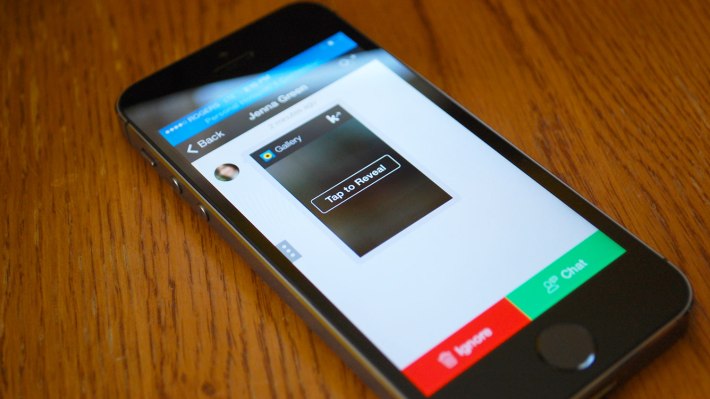Social network and instant messaging app Kik is making a small, crucial change to its platform today: new messages from strangers now show up with both avatar and any pics and content contained therein blurred by default, allowing users to opt to see that content once they deem it safe or appropriate. They can also quickly delete, block or report user and messages if they don’t like what they think they see.
The move represents a philosophical shift for Kik, which is clearly looking for a way to distinguish itself in the increasingly crowded messaging market. Kik’s newfound emphasis is designed to build on what it perceives as its strengths, which include offering users control over their messaging identity and connections, and being a network that doesn’t care where your contacts come from – be they existing real-world connections or people met through Tumblr, Twitter, Instagram or any other social source.
Unlike WhatsApp and others, Kik doesn’t base your identity on your phone number, and instead works exclusively on a username basis. That’s what gives it the power to offer users control over their identity, says founder and CEO Ted Livingston, since others in your network don’t need to know a single piece of information about you first before connecting. That means the young group of users that forms its core audience (teens to young adults) can give out their Kik information while still keeping any biographical or other contact information completely private.
[gallery ids="1004727,1004726,1004725,1004724,1004723,1004722,1004721,1004720"]
In the past, Kik has come under fire for its potential to expose users to content that might not be appropriate, which is a risk it faces especially as a network with a younger user base. This new step is designed to make it safer out of the starting gate, but I pointed out to Livingston that this could also mean lower engagement since the barrier to starting a conversation is much higher as a result.
“We spent a lot of time doing user studies and looking at data and tweaking it because that was exactly our concern,” he said. “The solution we came up with works really well; when you’re a brand new user, anybody that messages you will show up at the bottom of your chat list […] so you see new people because you only have new people. As that list gets longer, as soon as they get off the screen you have a button at the bottom that gives you a shortcut instead.”
Already, Kik included these features in the app, but now they’re activated by default. I asked Livingston whether this wasn’t a move made more in response to assuage critics and parents who have concerns about how young users are employing the network, but he said in fact it was the most-requested feature among users themselves; users are aware of the value of control over their own connections and connection methods, and want to wield that power effectively, he suggested.
Kik has over 120 million users, with 275,000 sign-ups per day, the company tells me. But its primary audience skews overwhelming younger. That’s a good problem to have in terms of niche appeal, but the next step according to Livingston is figuring out how to help older users extend their network to these same kind of serendipitous social connections that younger users are currently engaging with on the platform. Overall, the focus is on exploring this unique aspect of Kik, though, and making it into a place where you talk to your friends, no matter where you met them to begin with.
